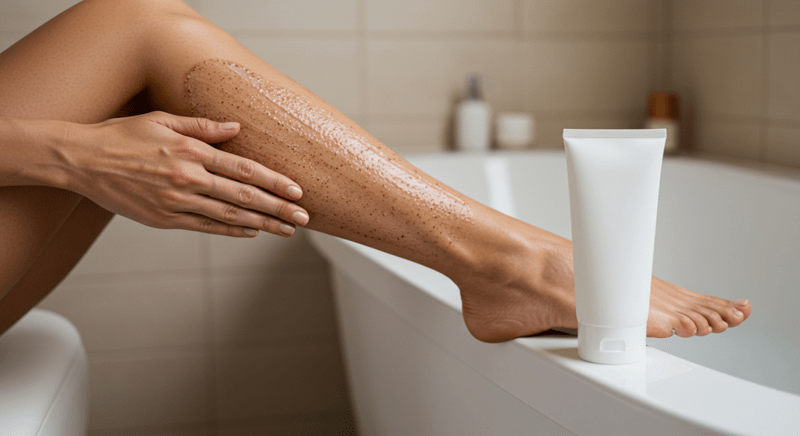
One of the simplest, most impactful things you can add to a regimen for brighter, softer-looking skin is exfoliation. Whether you're starting from scratch or refining a current routine, the trick is choosing the right skin exfoliator and how to use it effectively in order to greatly improve texture, boost radiance, and help your other products work better. Here, we explain the way exfoliation works, how to choose between such options as a chemical exfoliant or face scrub, and how to create a safety-first regimen that leads to long-term smooth skin care results.
An exfoliator for skin removes dead cell accumulation at the surface, so healthier, newer cells can pass through. That alone creates several observable changes: skin softens, pores are smaller, tone appears even, and moisturizers or serums penetrate more effectively. Exfoliating is akin to rebooting your skin's surface so it can better reflect light and feel smoother.
There are two general ways an exfoliator for the skin works: physical and chemical. The physical path is the face scrub — small beads or particles wear off dead cells. A chemical exfoliant dissolves cell bonds with acids or enzymes, so the cells slough off easily without scrubbing. Either method can be effective; the most suitable depends on your skin type, sensitivity, and objectives.
If resurfacing, erasing fine lines, and brightening are your priorities, a chemical exfoliant with a consistent level of glycolic acid will deliver faster, more even results than tough physical scrubbing. For reactive or sensitive skin, look for products labeled specifically as gentle exfoliants that blend low levels of acids with calming ingredients.
A chemical exfoliant will typically contain alpha hydroxy acids (AHAs) or beta hydroxy acids (BHAs). AHAs, like glycolic acid, are water-soluble and work on the surface to brighten and smooth. BHAs, like salicylic acid, go into oily pores and can be particularly useful for acne or blocked-up skin. Glycolic acid is small in molecular size, which allows it to penetrate and resurface well, and it is an omnipresent ingredient that appears in a multitude of at-home treatments and professional peels.
A face scrub provides immediate haptic feedback, allowing you to feel the dead skin coming off. Scrubs are ubiquitous, however. Softer scrubs contain very fine particles or soft beads and are used for delicate exfoliation. Harsh scrubs with larger, rougher particles may cause micro-tears in delicate facial skin and can lead to redness or sensitivity after repeated use. If you prefer the feel of a face scrub, apply one that is specifically designed for the face, with rounded, fine grains, and then follow up with moisturizing products to restore moisture.
When purchasing an exfoliant for the skin, having knowledge of how ingredients work enables you to tailor products to your routine:

Frequency is product- and tolerance-dependent.
Good results are based on frequency and supportive habits. The following are helpful tips to allow any exfoliator for skin to function best:
Textured skin, dullness, or uneven tone are best corrected by a chemical exfoliant containing glycolic acid or lactic acid.
Exfoliating is a cornerstone of smooth skin care, but it's only one part of a comprehensive plan.
Remember: the best exfoliator for skin is the one you’ll use consistently without harming the skin barrier. That might be a low-concentration chemical exfoliant with glycolic acid for someone aiming to resurface and brighten, or a gentle face scrub for those who prefer tactile exfoliation and careful, gentle exfoliation. Both approaches have a place in modern routines when selected and used thoughtfully.
Choose your tool: either a chemical exfoliant or a face scrub, depending on skin type.
With good technique and a knowledgeable product choice, a skin exfoliator can be the difference between dry, patchy skin and softer, brighter, healthier-looking skin. Whether your skincare aesthetic leans toward a strategic chemical exfoliant with glycolic acid or a nourishing, well-formulated face scrub, focus on maintaining your skin’s natural barrier. Make exfoliation a balanced and mindful step in your smooth skin care routine for lasting radiance.
This content was created by AI